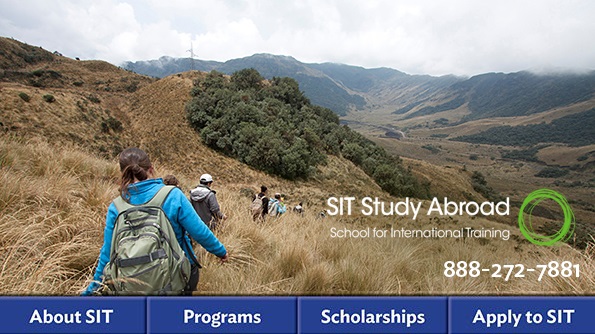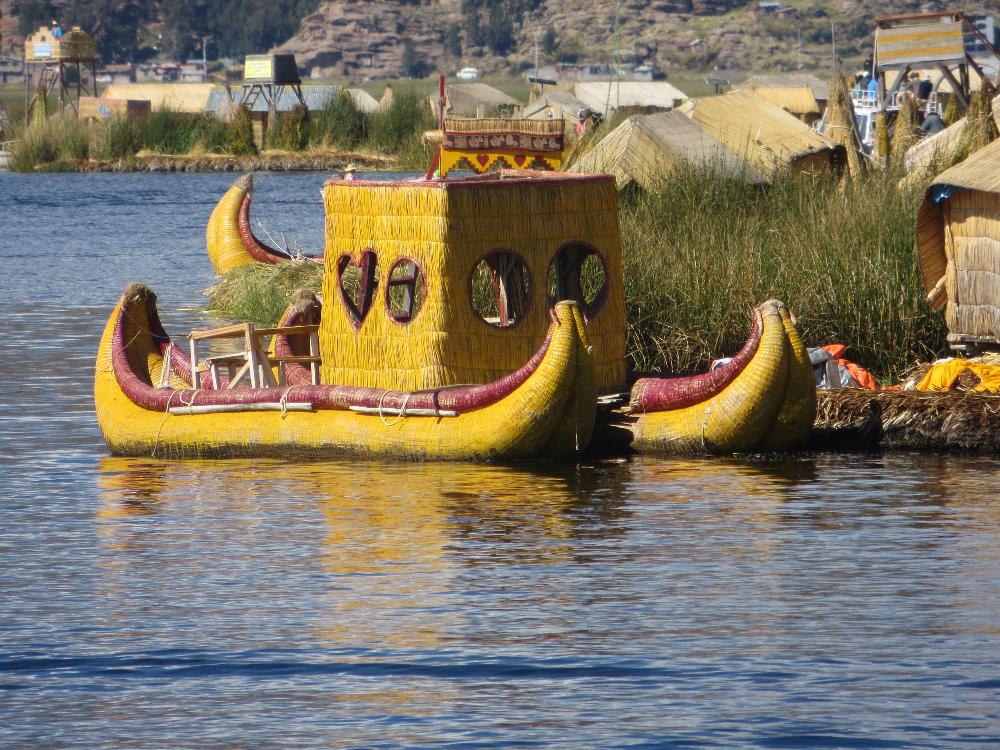SIT Study Abroad Peru: Indigenous Peoples and Globalization
Explore how indigenous peoples in Peru are adapting and innovating to preserve their cultural values and shape their own future in the face of globalization.
WHY STUDY INDIGENOUS IDENTITIES IN PERU?
Up to 45 percent of the population in Peru identifies as members of an indigenous community. Here, you will witness the impacts of globalization on indigenous peoples and be challenged to scrutinize the complexities of identity, transformation, and marginalization. You will have two homestays, one in urban Cuzco and a second on Taquile Island, where you will experience different Peruvian lifestyles, perspectives, and identities.
During three weeks of travel to the Peruvian Amazon and Machu Picchu, and the floating reed islands of the Uros people of Lake Titicaca, you’ll see how communities are working toward their own definition of development and cultural preservation. You will also learn about research methods and ethics, which will prepare you to conduct a month-long Independent Study Project on a topic of your choice related to the program themes.
In addition, you will learn basic Quechua and develop your Spanish language skills related to social and cultural studies through classroom learning, cultural immersion, homestays, and excursions.
Please visit the SIT Study Abroad website for details on the program highlights and details of coursework, educational excursions, and housing.
MONEY MATTERS
SIT is an all-inclusively priced study abroad program – including academics costs, excursions, accommodations and meals, airport transfers, and health insurance. Be sure to discuss how study abroad costs are handled at your school with your study abroad advisor and read the website for more specific information.
SCHOLARSHIPS
SIT has awarded an average of over $1.3 million in scholarships and grants to SIT Study Abroad students in the past three years. All scholarships and grants are need-based. Awards generally range from $500 to $5,000.
CONTACT SIT STUDY ABROAD

Major Topics of Study
- Indigenous rights, advocacy, and policy
- Community empowerment
- Identity recognition
- Historical legacies and contemporary social movements
- Impacts of global changes: society, culture, economy, and ecology
Please visit the SIT Study Abroad website for details on the program courses (including syllabi), educational excursions, and housing.
There is no "typical day"on an SIT program. Activities may take place on any day of the week and at any time of day to be in accordance with according to local norms and to take advantage of once-in-a-lifetime learning opportunities. Thus, the schedule and structure of the program are likely very different from what students are used to on their home campuses. The semester progresses in phases:
- The program begins with a thorough orientation.
- During the first two and a half months of the program, students are engaged in foundational coursework, including:
- thematic seminars, including education excursions,
- language instruction focused on improving practical communication skills, and
- a field research methods and ethics course that prepares students to conduct independent research.
- For the last month of the program, students conduct an Independent Study Project (ISP) on an approved topic of their choosing.
- Finally, students present their project, participate in program evaluations, and prepare to return home.
- SIT Study Abroad offers a field-based, experiential approach to learning.
- Each program has a small group of students (typically 10–35).
- On an SIT program, students gain high levels of access to many different stakeholders and experts relevant to the issues the program is examining.
- While some learning will be conducted at the SIT program center, extensive learning is done outside the classroom — in host communities, field stations, NGO headquarters, ecological sites, health clinics, and art studios.
- Many students go on to use their Independent Study Projects as a basis for senior theses on their home campuses. Others use their undergraduate research and overall study abroad experience to successfully apply for fellowships such as Fulbrights and Watsons.
Money Matters
Be sure to discuss how study abroad costs are handled at your school with your study abroad advisor.
SIT tuition and room and board fees include the following:
- All educational costs, including educational excursions
- All accommodations and meals for the full program duration
- Transportation to and from the airport, and on all educational excursions
- Health and accident insurance
Scholarships:
- SIT awards nearly $1.3 million in scholarships and grants annually.
- All scholarships and grants are need-based.
- Awards generally range from $500 to $5,000.
- The SIT Pell Grant Match provides matching grants to all students receiving Federal Pell Grant funding when it is applied to an SIT Study Abroad semester program.
- Contact the financial aid and/or study abroad office(s) at your college or university to learn if your school’s scholarships and grants and federal and state aid programs can be applied to an SIT Study Abroad program.
Contact SIT Study Abroad